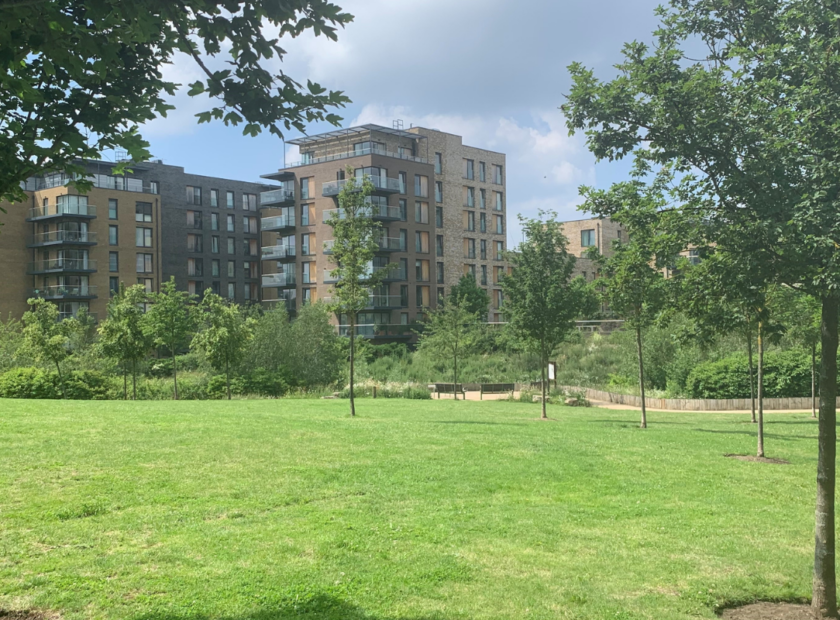Unwanted noise can be irritating, especially while we are in the comfort of our homes. Yet noise is more than just an irritant – it can have real and substantial impacts on our health and quality of life. As the science evolves, we’re realising that quiet spaces are not a luxury, but a necessity.
Hence why the TCPA’s Healthy Homes Bill is so important. The campaign aims to raise awareness about good design, equality and resilience in the built environment, and secure the development of decent homes which enhance, rather than undermine, people’s health, safety, wellbeing and life chances. The draft bill sets out ten high-level principles to support this, including the principle is that “all new homes must meet enhanced standards to prevent unacceptable noise pollution”.
Noise is the second largest environmental cause of ill health after air pollution[1], and a WHO study found that at least one million healthy life years are lost every year in Western Europe as a result of exposure to environmental noise. Furthermore, a UK-focused study by the Science for Environment Policy showed that exposure to noise above recommended levels resulted in an additional 1169 cases of dementia, 788 cases of stroke and 542 cases of heart attack in a single year[2].
Noise is also a growing issue. More people live and work in cities than ever before, with people drawn to the increased access to work as well as social and cultural amenities that city life provides. Yet the trend towards urbanisation has resulted in a growth in high density development and move towards a 24-hour economy, increasing the noise pollution people are exposed on a daily basis.
With the pressure to ramp up building rates, particularly in urban areas, we must ensure noise doesn’t get overlooked. Whilst there are light-touch requirements in the Building Regulations on internal noise, the requirements are insufficient to prevent you from hearing your neighbour’s music and loud conversations, for example, and there are few requirements to limit the noise entering buildings from the outside environment. This is a particular issue in urban environments where buildings are often subject to significant noise from road, rail and air traffic.
High-quality housing with good acoustic design can go a long way in addressing noise issues. The choice of materials used to build our homes, can make a significant difference to the experience of noise from internal and external sources. For example, the BRE and Loughborough University have led the development of a new dementia-friendly home designed to enable people to remain in their own homes for longer. Studies have shown that high noise levels can be problematic for people with dementia, resulting in sleep deprivation, agitation, confusion and fear. The house has therefore been designed to manage internal and external noise, with adaptions including sound insulation on the building walls, roof and between the floors, creating a more peaceful environment for occupants.
The appetite to address the impact of noise through better design and building practice is also growing at a policy level. The Welsh Government has embedded noise and soundscape in their new planning policy, giving it parity with other aims of the planning system such as housing and economic growth, placing onus on developers to find solutions to address noise. Protecting and improving the acoustic environment through good design is a key pillar of the Mayor of London’s Environment Strategy. It also recognises that initiatives to create energy efficient buildings, using materials such as insulation and triple glazing, have a positive impact on internal noise levels and help reduce the impact of external noise.
Indeed, taking a holistic approach to buildings has the potential to create high quality and healthy housing. By approaching outcomes in the round when designing a building, such as energy efficiency, noise mitigation and fire safety, solutions can be chosen that deliver on multiple fronts, simplifying the approach as well as delivering on quality. That’s why we’re delighted to support the TCPA campaign which has brought all the elements of the building together when advocating for healthier homes.
For more information about the impact of noise in and solutions to noise pollution in the built environment, read our ‘Good Growth, Quiet Buildings’ report here.
This article was written by Jessica Smith, policy and public affairs advisor for Rockwool, as part of a series of expert blogs for the TCPA’s Healthy Homes Act campaign.
[1] Noise kills, and blights lives in Europe, New Scientist – https://www.newscientist.com/article/dn20326-noise-kills-and-blights-lives-in-europe/
[2] Science for Environment Policy. Thematic issue: Noise Impact on Health. January 2015, issue 47. P11 – https://ec.europa.eu/environment/integration/research/newsalert/pdf/47si.pdf
Photo by Oleg Magni from Pexels




